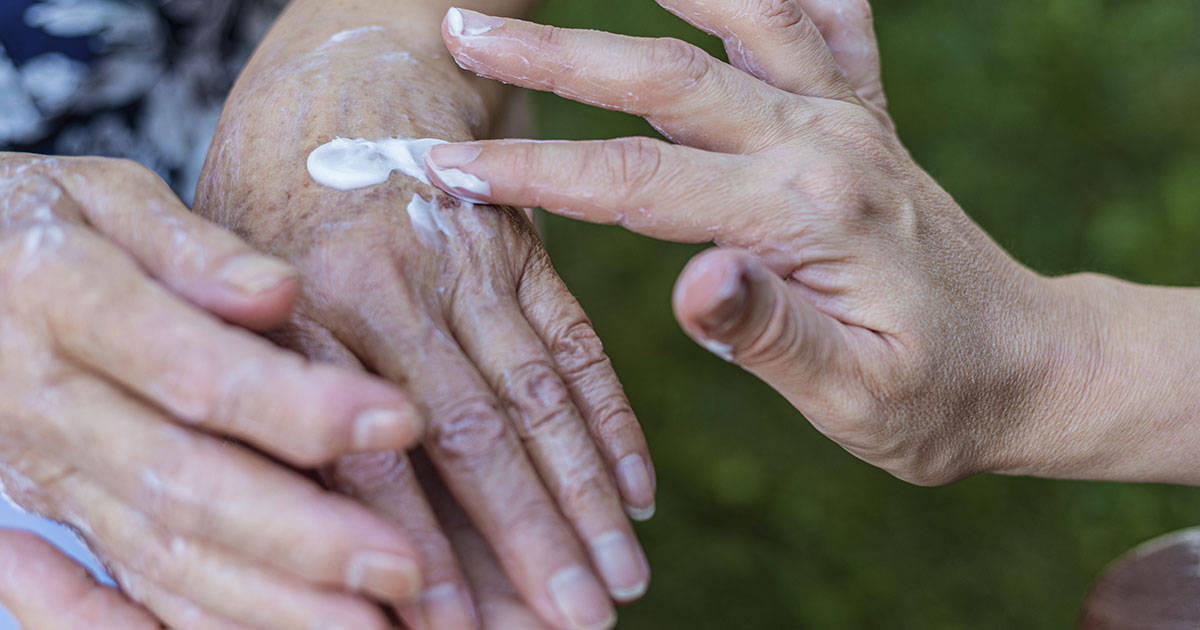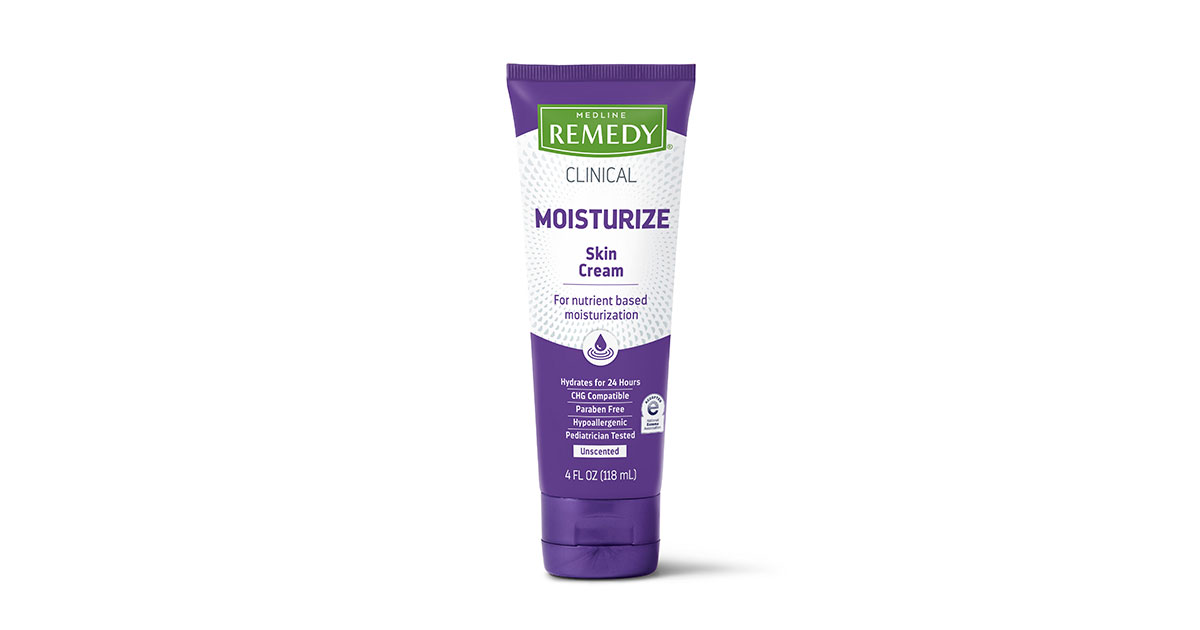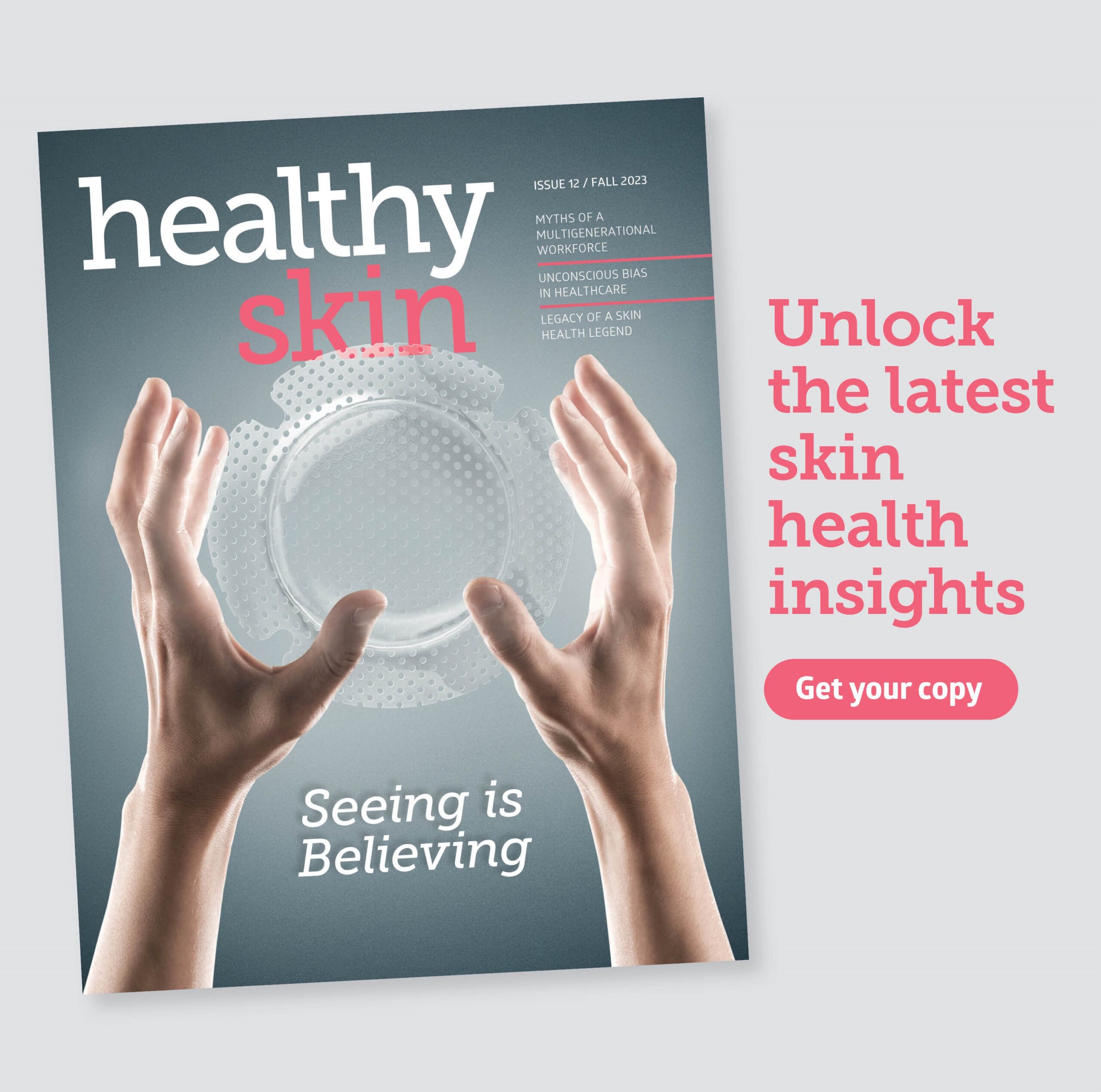Addressing challenges related to pressure injuries, preventive skin health

By Medline Newsroom Staff | April 18, 2023
Pressure injuries are a significant health issue and one of the biggest challenges that healthcare providers face on a day-to-day basis, according to The Joint Commission. A shift in priorities during the pandemic and ongoing staff shortages have resulted in less time for consistent, preventive protocols and ongoing high pressure injury rates.
To learn more about the state of skin health today, the need for evidence-based skin protocols, and the potential impact of the new Coalition for At-Risk Skin’s 21 consensus statements—providing specific guidance on preventive skin care, including products and usage—the Medline Newsroom recently talked with Amin Setoodeh, BSN, Medline senior vice president of skin health solutions and clinical services.
- What is the state of skin health right now across the continuum of care?
- Amin Setoodeh: It’s a very dynamic situation. I consider our skin health, and preventive skin health in particular, a national crisis in the U.S. This is because of the fact that our customers and the entire industry across the continuum—especially in skilled nursing homes, home care and hospice– are really forced to do so much more with less due to financial pressures, lack of sufficient government funding, shortage of staff, and the increased acuity of the patients they care for. Unfortunately, this crisis is not getting the right attention at a national level from policy makers, partially because there’s not enough research and data out there to bring more awareness to this significant issue. We know in the industry that preventive skin care has a major impact on skin care conditions. However, in the past, there was never a specific standard as far as the right products to use, how often to use them, and how much product to use. As a result, many organizations today don’t have a comprehensive preventive skin care program. The skin is the largest organ in the body, and there needs to be a specific skin care regimen. This is especially true for at-risk patients, and 100% of patients in long-term care facilities are at risk for skin injury due to polypharmacy, co-morbidities, chronic or acute disease or disorders, psychosocial factors and the aging process. I know that the industry is well aware of these challenges, as the incidence of pressure injuries are increasing, and clinical leaders are trying to figure out what to do and how to get back to the basics by putting more emphasis and focus on preventive skin care.
- What do you see as the most prevalent barriers in terms of clinicians prioritizing preventive care over treatment?
- Amin Setoodeh: There are several different factors that impact this. First, I believe that there is a significant amount of stress on the frontline care providers because of the shortage of nurses and certified nursing assistants (CNAs). We just don’t have enough bandwidth to do basic patient care, which includes and starts with skin care. Secondly, is the fact that during the COVID crisis there was a significant shift as far as focusing on infection control and preventing the transfer of the virus in different communities. So much emphasis was put on on keeping patients alive and preventing infection from happening that I think there was a change away from basic nursing, which starts with preventive skin care. This includes repositioning the patient, providing good perineal care, checking in and changing the patient, and moisturizing the skin. And I think the third issue is that most organizations do not know what they don’t’ know. They’re not tracking their skin conditions. They’re only tracking their injuries, but they don’t know their instances of moisture-associated skin damage or skin tear, so there’s a lack of visibility as far as how much staff are using products, how they are using products, and whether or not they have a specific clinical protocol for preventive skin care.
“We know in the industry that preventive skin care has a major impact on skin care conditions. However, in the past, there was never a specific standard as far as the right products to use, how often to use them, and how much product to use.”

Amin Setoodeh, BSN
Medline Senior Vice President of Skin Health Solutions and Clinical Services
- What can healthcare providers do to improve care?
- Amin Setoodeh: There are several different opportunities for improving overall skin health, and preventive skin care specifically. First, it starts with really doing a self-assessment to take a look at your facility – strengths and areas for improvement– and then based on that, coming up with a quality improvement and innovation portal (QIIP). This process allows you to really focus on your clinical guidelines. Do you have evidence-based, up-to-date clinical guidelines, and a really good evidence-based skin care program? If not, this may be an opportune time to develop good guidelines. And that’s something that Medline can help with. As the manufacturer of skin care products, this is what we do. We take a look at clinical guidelines, and we customize them based on each organization’s needs. Second, is to make sure that your product formulary supports evidence-based practices at the bedside. This is a big challenge in the industry. For example, we all know that lotions and creams are different, and that creams are more effective at preventing transepidermal water loss (TEWL). Lotions also may have a drying effect and provide a less effective skin barrier Unfortunately, if you have a formulary that only offers a lotion, that’s what the staff has access to. And then third, it’s important to really put a concentrated effort on promoting evidence-based practice for skin care, and getting back to the basics. And really embracing it and celebrating this. It is okay to take baby steps.
- Why are these CARS guidelines, and the expected ongoing dialogue among the CARS skin health experts, so important in terms of moving care forward?
- Amin Setoodeh: The CARS team includes nine wound care experts – of different ages and career stages, and representing the full continuum of healthcare – who got together and agreed on 21 consensus statements covering everything from practice, special population and organization considerations and perspectives related to preventive and at-risk skin care, as well as specific guidelines for the type and amount of moisturizer needed for adequate care. These consensus statements are paramount in terms of moving preventive skin care forward. The industry needs more expert opinion, and very specific clinical guidelines on the rules of engagement pertaining to preventive care. The problem is that in the past, prior to the formation of CARS, no other institution really put emphasis on how much preventive moisturizer to use in order to reduce risk of skin breakdown, or what type of products you should be selecting. Having this team of professionals come together and create recommendations, and then publicizing and really increasing awareness of these standards, is really significant. Also, making the information readily available to providers across the country can help them reexamine their approach and create a standardized skin care program.
- What do you see as the most important, or urgent, recommendations and proposed changes among the consensus statements?
- Amin Setoodeh: All 21 consensus statements are important, but one of the most important recommendations is probably the recommendation that the ingredients of the products matter. It’s very important that you use the right product with the right ingredient. TEWL occurs when water passes from the dermis through the epidermis, evaporating from the skin’s surface. The more TWEL increases, the more the skin’s barrier function is weakened. Ingredients such as oils, petrolatum and silicones help prevent TWEL. The CARS statements recommend nutrient-based creams, citing a recent study comparing a ceramide cream with a nutrient-based dimethicone cream. The study found that the nutrient-based cream proved more effective at reducing water loss at the 24-hour mark. The amount of cream also is critical, with the CARS consensus statement recommending 1 fluid ounce of moisturizer twice a day. This is extremely important.

Medline Remedy® color-coded skin care products offer high-quality ingredients
Medline offers a comprehensive Skin Health Solution program that includes best practice guidance, education and training and a system of intuitively designed products, paired with utilization recommendations, to support best practices. This includes Medline Remedy skin care products, with high quality ingredients, and intuitive color-coded packaging and instructions.
Learn more about how Medline helps standardize skin and wound care with a holistic strategy.
Medline Newsroom Staff
Medline Newsroom Staff
Medline's newsroom staff researches and reports on the latest news and trends in healthcare.

